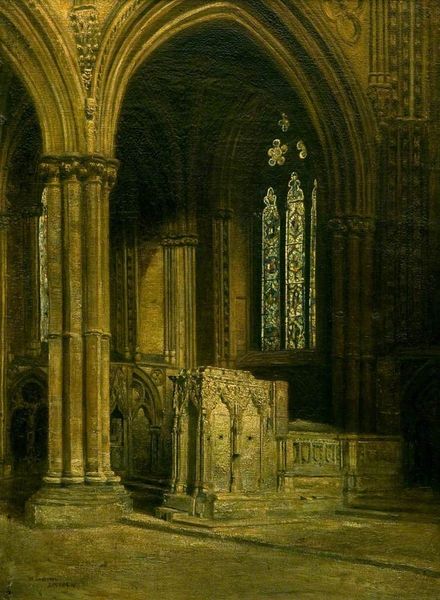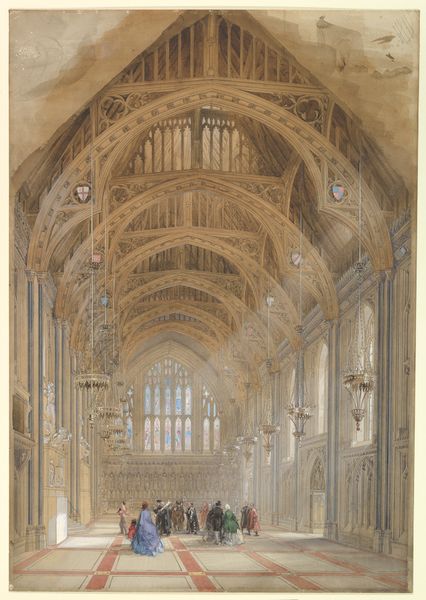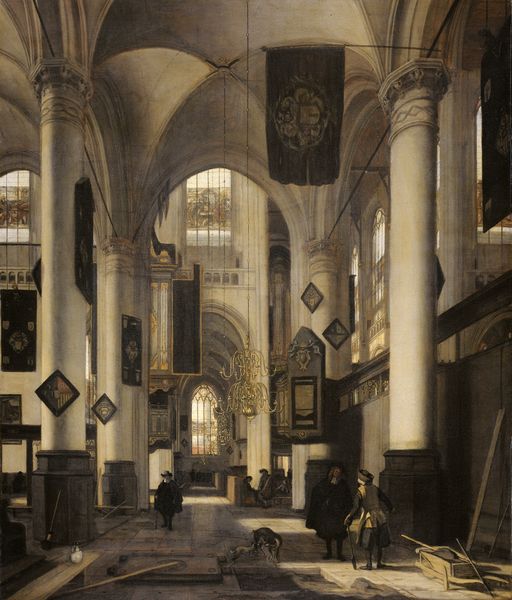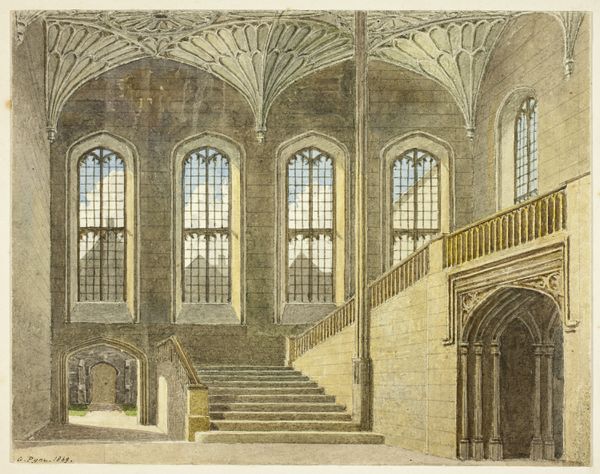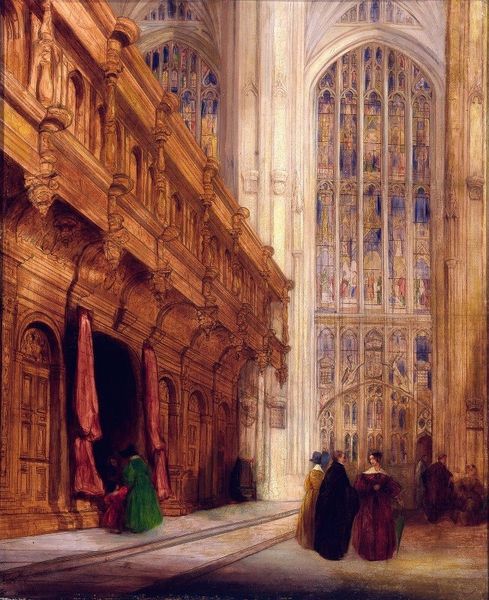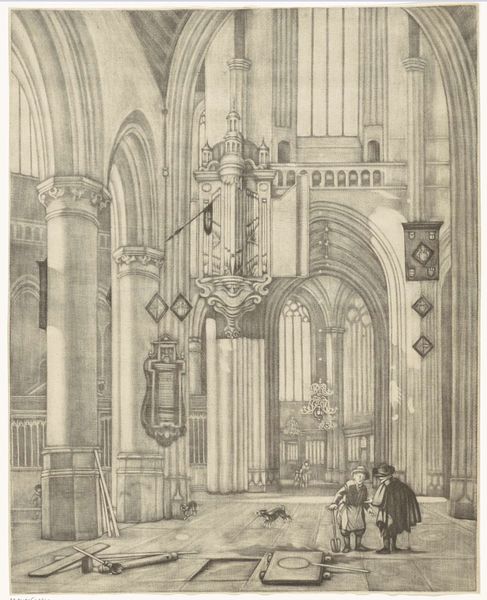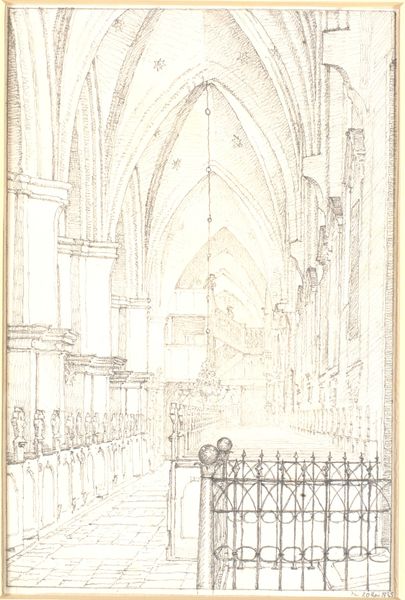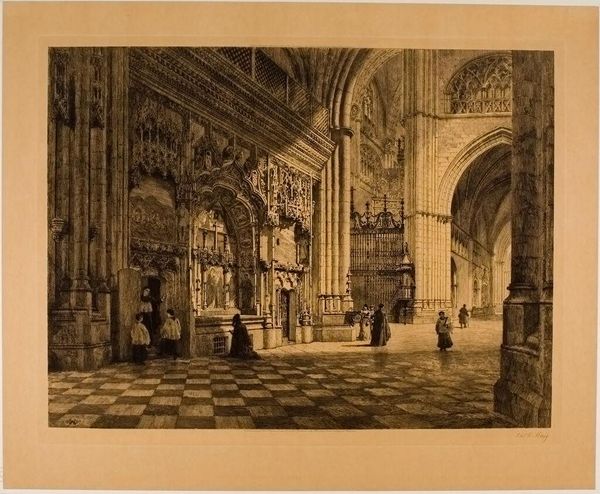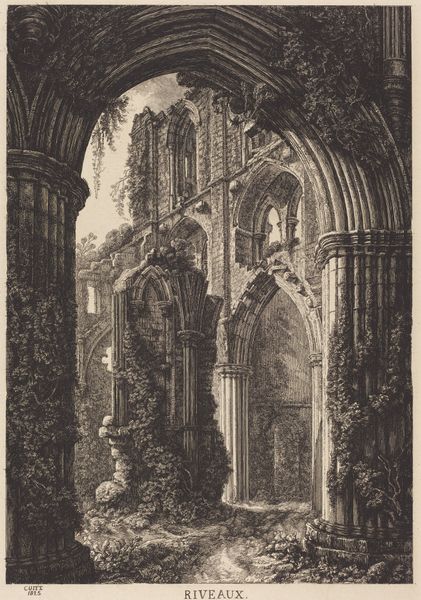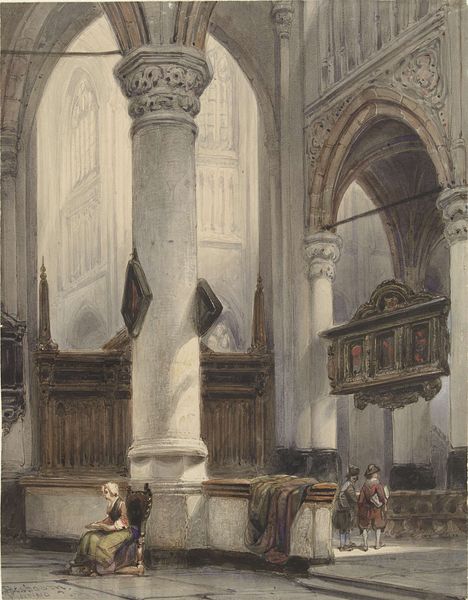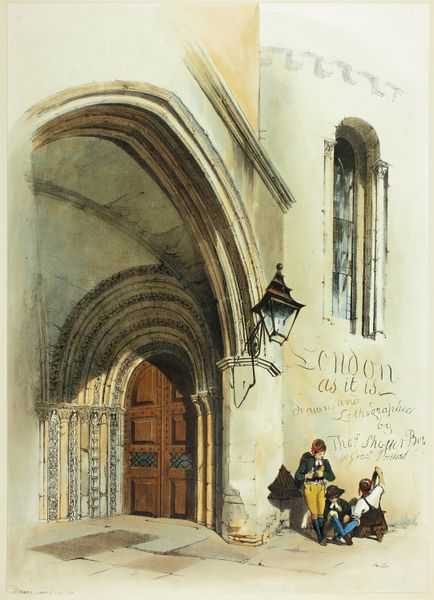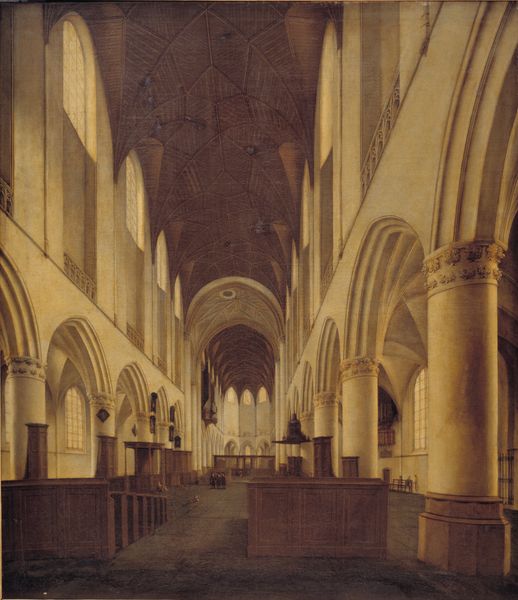
Dimensions: support: 784 x 616 mm
Copyright: CC-BY-NC-ND 4.0 DEED, Photo: Tate
Curator: Frederick MacKenzie, the artist, gives us this watercolor view of "The South Ambulatory, Westminster Abbey." What strikes you first? Editor: The overwhelming sense of reverence. The cathedral’s sheer scale, combined with the somber lighting, evokes a powerful spiritual atmosphere. Curator: Absolutely. The arches, the light, the quiet watchers – all speak to Westminster Abbey's complex intersection of faith, power, and historical memory. For centuries, it’s been the site of coronations, royal weddings, and, of course, burials. Editor: Note how light floods in, almost as a divine presence, illuminating the carved figures adorning the screens. Those repetitive figures--aren't they suggestive of a chorus of witnesses? Curator: They are witnesses, yes, but also active participants in maintaining the Abbey's identity, a physical manifestation of its history. MacKenzie, with every stroke, asks us to consider the Abbey’s cultural legacy. Editor: It's an invitation to contemplate not just the spiritual, but the weight of history embedded within those stones. Curator: Precisely. The image is about the Abbey itself and all it represents. Editor: I see that now. It's quite moving when you consider the long history.
Comments
tate 6 months ago
⋮
http://www.tate.org.uk/art/artworks/mackenzie-the-south-ambulatory-westminster-abbey-t03034
Join the conversation
Join millions of artists and users on Artera today and experience the ultimate creative platform.
tate 6 months ago
⋮
This view was painted nearly forty years after William Blake first went to Westminster Abbey for James Basire. Then he drew the mediaeval monuments of kings and queens 'in every point he could catch, frequently standing on the monument and viewing the figures from the top'. In the left foreground of this watercolour is the canopied tomb of Queen Philippa of Hainault, much as Blake knew it in about 1774 when he drew his 'Portrait of Queen Philippa'. His later engraving after this is no.10 in this display. The railings round the tomb were removed in the 1820s. Gallery label, August 2004
